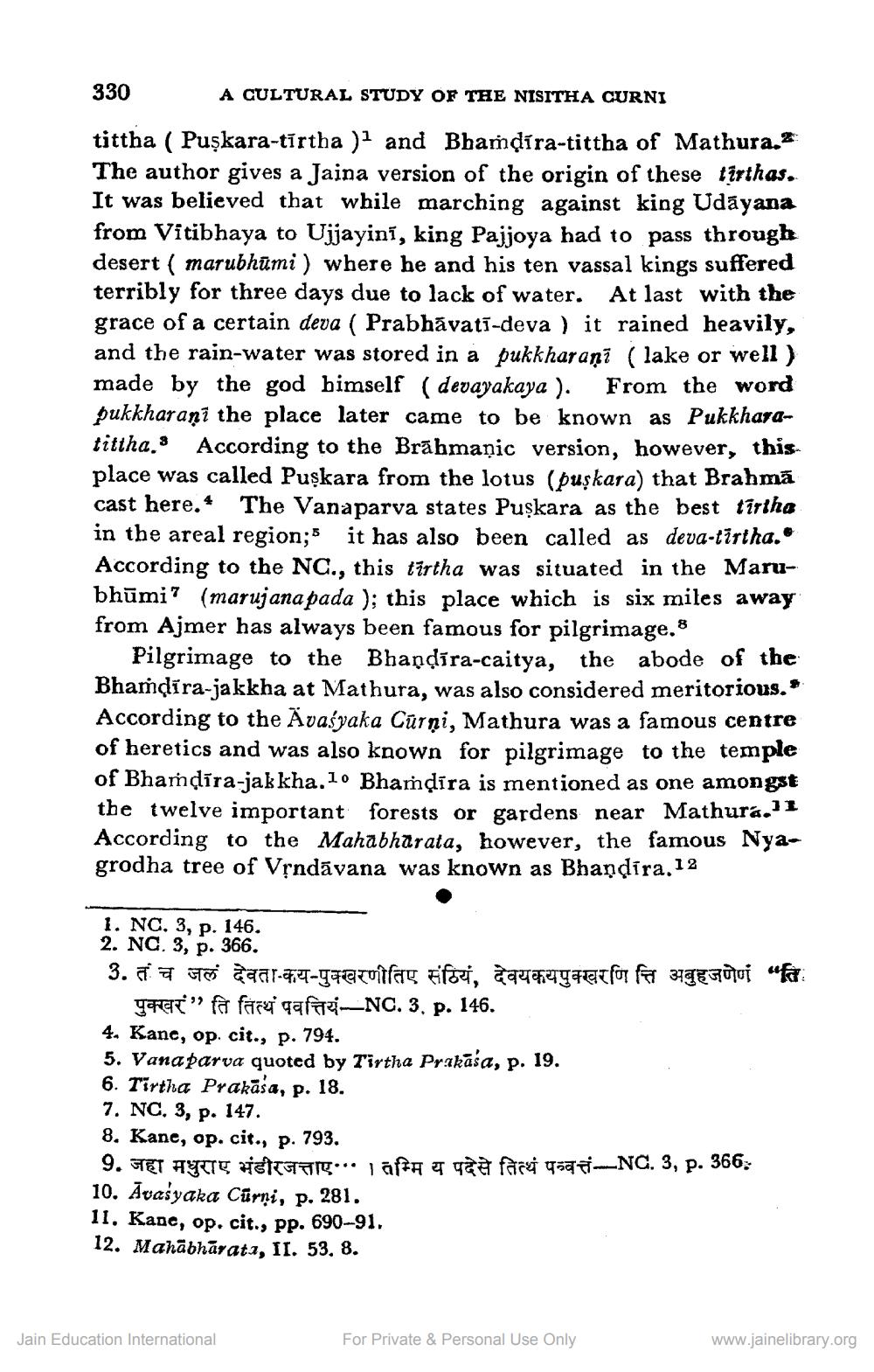________________
330
A CULTURAL STUDY OF THE NISITHA CURNI
tittha ( Puşkara-tīrtha )1 and Bhamdíra-tittha of Mathura. The author gives a Jaina version of the origin of these tirthas. It was believed that while marching against king Udayana from Vitibhaya to Ujjayinī, king Pajjoya had to pass through desert ( marubhūmi) where he and his ten vassal kings suffered terribly for three days due to lack of water. At last with the grace of a certain deva ( Prabhāvati-deva ) it rained heavily, and the rain-water was stored in a pukkharani ( lake or well) made by the god bimself (devayakaya). From the word pukkharaại the place later came to be known as Pukkharatittha.& According to the Brāhmanic version, however, this. place was called Puşkara from the lotus (puşkara) that Brahma cast here. The Vanaparva states Puşkara as the best tirtha in the areal region;s it has also been called as deva-tīrtha. According to the NC., this tirtha was situated in the Marubhūmi? (marujana pada ); this place which is six miles away from Ajmer has always been famous for pilgrimage.8
Pilgrimage to the Bhandíra-caitya, the abode of the Bhamdīra-jakkha at Mathura, was also considered meritorious.* According to the Ävaśyaka Cūrni, Mathura was a famous centre of heretics and was also known for pilgrimage to the temple of Bhaṁdira-jak kha.lo Bhaṁdira is mentioned as one amongst the twelve important forests or gardens near Mathura." According to the Mahabharata, however, the famous Nyagrodha tree of Vịndāvana was known as Bhandira. 1 2
1. NC. 3, p. 146. 2. NO. 3, p. 366. 3. तं च जलं देवता-कय-पुक्खरणीतिए संठियं, देवयकयपुक्खरणि त्ति अबुहजणेणं "ति
get"fa farvi gara-NC. 3. p. 146. 4. Kanc, op. cit., p. 794. 5. Vanaparva quoted by Tirtha Prakāśa, p. 19. 6. Tirtha Prakāša, p. 18. 7. NC. 3, p. 147. 8. Kane, op. cit., p. 793. 9. TET AYTIT HET Gag. Jaffnete e farei qua7_NC. 3, p. 366: 10. Āvašyaka Cürni, p. 281. 11. Kanc, op. cit., pp. 690-91. 12. Mahābhāratı, 11. 53. 8.
Jain Education International
For Private & Personal Use Only
www.jainelibrary.org




